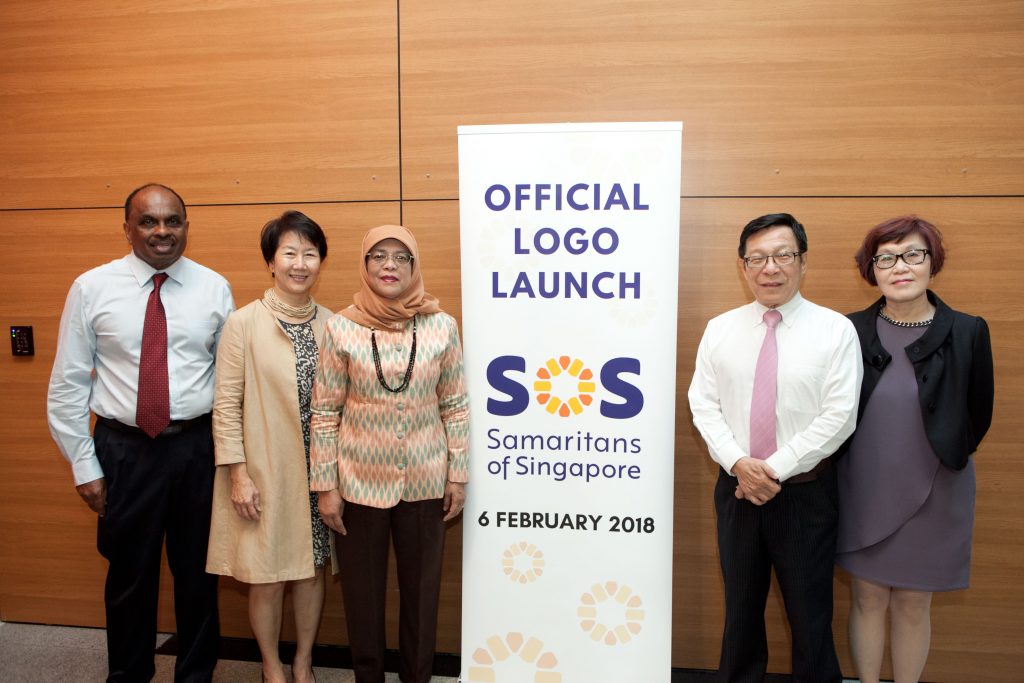Top image: Jasmine Ho for RICE Media
Trigger warning: Mentions of suicide
If we were to grade Singaporeans on their knowledge and approach to the topic of suicide, they would receive a D grade. This is the unfortunate finding from an unprecedented national survey on suicide published on May 9, conducted by the Singapore Management University.
The survey of 2,960 respondents concludes that we are in this dissatisfactory position because, till today, in Singapore, suicide remains a taboo subject confined to the proverbial cemetery, buried and never spoken on. The conspicuous absence of news reports on the survey findings in the mainstream press, more than a week since its release, proves this very point.
Beyond poor knowledge of suicide, the study has also found that few Singaporeans will step in to help a suicidal person in need. The issue of support structures then comes into play. Still, the situation is equally dismal because the study shows that only a tiny percentage of respondents feel that there is adequate support for someone facing a crisis and thinking about or being affected by suicide.
The stunning silence of suicide over the years
While this study is the first of its kind, its timing shouldn’t be surprising, given the increased discourse about mental health in the last two years. According to Mr Gasper Tan, who helms Samaritans of Singapore (SOS), we are currently facing a mental health crisis, worsened by the pandemic. The chief executive of the suicide prevention centre said there’s a jump of 89 per cent in at-risk individuals seeking support from his organisation.
This isn’t entirely unexpected—in 2020, Singapore reported 452 suicides, the highest count since 2012. This equates to an average of 1.2 suicides a day.
To address this urgency, SOS participated in the study with SMU’s Principal Lecturer of Statistics Rosie Ching and her 62 students in January and February this year, reaching out to people through face-to-face interviews, telephone, and video conference calls.

The fact this study was even conducted is significant considering how suicide is an issue we often shy away from discussing—not only among the public but also in official settings. When former Nominated MP Anthea Ong sought suicide statistics in schools in Parliament, she wasn’t given the complete data as requested, with then Education Minister Ong Ye Kung doubting its usefulness. “Tabulating and publicising such data can have other implications, such as heightening suicide risk in vulnerable youths. I may be paranoid, but I do not want to treat this lightly,” said Mr Ong.
Without having a public discourse on this sensitive yet crucial subject, suicide is merely swept under the carpet. As a result, when it emerges to haunt Singaporeans, they do not know how to deal with it, which has surfaced in the survey findings.
We know little about suicide
In the survey findings, 77 per cent of Singaporeans indicated that their knowledge of suicide is below average, with some attributing it to a lack of outreach or education. Because of this lack of knowledge, over 70 per cent of respondents said they would avoid suicidal individuals in fear that they would only aggravate the situation.
Given that the mainstream press plays a vital role in public education, their extreme caution in approaching suicide news stories might have attributed to the ignorance Singaporeans have today on this subject.
Through my interactions with media veterans, they shared that unless the suicide is newsworthy, they would usually refrain from running a story on it. The suicide of American chef Anthony Bourdain or the suicide of cabinet minister Teh Cheang Wan in 1986, if we were to go back in time, are among the exceptions.
On the rare occasion when the media publishes a news story on suicide, they will exercise great caution with their choice of words—for instance, describing a person who had fallen from a height instead of committing suicide from a tall building. Besides excluding graphic details of the suicides, they will also put up helplines in the article in case a suicidal person reads it and wants to seek help.

There might be a reasonable explanation for avoiding suicide coverage in the media due to a legitimate concern of copycat suicides, which may arise following media reports of such deaths. Such a trend is well-documented in studies like this and there’s a term for it: The Werther effect.
To search for a local example, we need to look no further than Bedok Reservoir, which had a slew of suicides reported more than a decade ago, and consistent press coverage only served to drive up suicide figures.
Ironically, in trying to be overly prudent about suicide reporting, the media ends up shunning an important conversation on the subject. After all, when the media exclusively run stories about high-profile individuals taking their lives, they are missing an opportunity to create more important conversations about suicides beyond just headlines.
Shunning this conversation is counter-productive as it doesn’t eradicate the problem. Instead, it only enables the ignorance which plagues Singaporeans today. The only way forward is more public education via greater media coverage on suicides, but still done in a responsible and sensitive manner.
We don’t help suicidal persons enough
The study found that only 33 per cent of Singaporeans would take steps to help someone who shares personal thoughts of suicide.
Learning that most Singaporeans will turn a blind eye and ignore someone with suicidal tendencies is a chilling revelation, especially when a premature and preventable death is imminent.
Even among those who claimed they “offer presence and continual support”, how many of them did so effectively? Suicide prevention guides like this state that offering suicidal people ways to fix their problems or making them feel like they have to justify their suicidal feelings are inappropriate, even if some of us believe these are ways to offer support.
If there was a playbook for how Singaporeans respond to suicide, it might go something like this: snap out of it, don’t think so much, look on the bright side, and so on. But unfortunately, these are responses that not only lack empathy but also sidestep the forbidden S-word.

Essentially, it’s not only about whether we are having the conversation (or not) but about how we approach it when we do.
Within the small proportion of respondents who claimed they would help a suicidal person, only 33 per cent would encourage professional support. This finding is synonymous with the substantial majority who believe in the existence of stigma associated with suicide, with 82.9 per cent of respondents indicating so.
For a country of people which prides itself on self-reliance, the stigma associated with suicide is probably the most challenging conundrum to resolve. Seeking professional help for having suicidal tendencies is socially perceived as shameful because it’s a display of weakness, especially among the older generations.
We are finally moving past this slowly, but until we eradicate this stigma from the national psyche, few will recommend professional support for fear of putting their loved ones in an unsavoury light.
We think support for suicide is inadequate
But the stigma connected with suicide is just one reason for avoiding professional support. There is also a poor public perception of the support structure for suicidal individuals, with less than 10 per cent of respondents indicating that the available support is adequate.
Currently, efforts to support those thinking or affected by suicide—or for that matter, mental health in general—are scattered, with individual organisations carrying out their services without an overarching national body that has greater coordination power. As such, there’s still urgency for a permanent office, not just a task force, to look into issues relating to mental health, more so since suicide is linked to one’s mental wellness.

But beyond that, now it’s time to have a national strategy to look into suicide prevention and help those at risk. It’s insufficient to rely solely on the Samaritans of Singapore, the country’s only suicide prevention centre, which is not even a government organisation.
With a more coherent national strategy, it’s easier for the government, with its massive arsenal, to mobilise resources to alleviate the problem.
We take the cue from the government
Glancing through the parliamentary records from January 2021, it is clear that our lawmakers recognise suicide to be a significant problem. Our checks have shown that MPs have filed more than 20 questions and six speeches on the topic thus far in a year.
As MPs from both sides of the political aisle make headway with this subject, is the government ready to move forward with them? This is not to say that progress hasn’t been made so far. For example, the government made a landmark move to decriminalise suicide in 2019 in an effort to reduce stigma and encourage those who are suicidal to seek early intervention.
But the disheartening findings in Ms Ching’s study have shown that more should be done on suicide prevention, be it encouraging more conversations and treating it less of a taboo topic or having a more concerted national effort to address this problem.
Ultimately, those who took their own lives wanted the pain—not their lives—to stop, a sentiment echoed by Ms Ching in the study. So how do we adequately address the root causes of this pain? To figure this out, let’s make suicide a mainstay topic in our national discourse, only then will we have the adequate amount of resources to adequately alleviate the issue.
Helplines:
National Care Hotline: 1800-202-6868 (8AM – 8PM)
Institute of Mental Health’s Mental Health Helpline: 6389-2222 (24 hours)
Samaritans of Singapore: 1800-221-4444 (24 hours) /1-767 (24 hours)
Singapore Association for Mental Health: 1800-283-7019
Silver Ribbon Singapore: 6386-1928
Tinkle Friend: 1800-274-4788 and www.tinklefriend.sg
Community Health Assessment Team: 6493-6500/1 and www.chat.mentalhealth.sg






